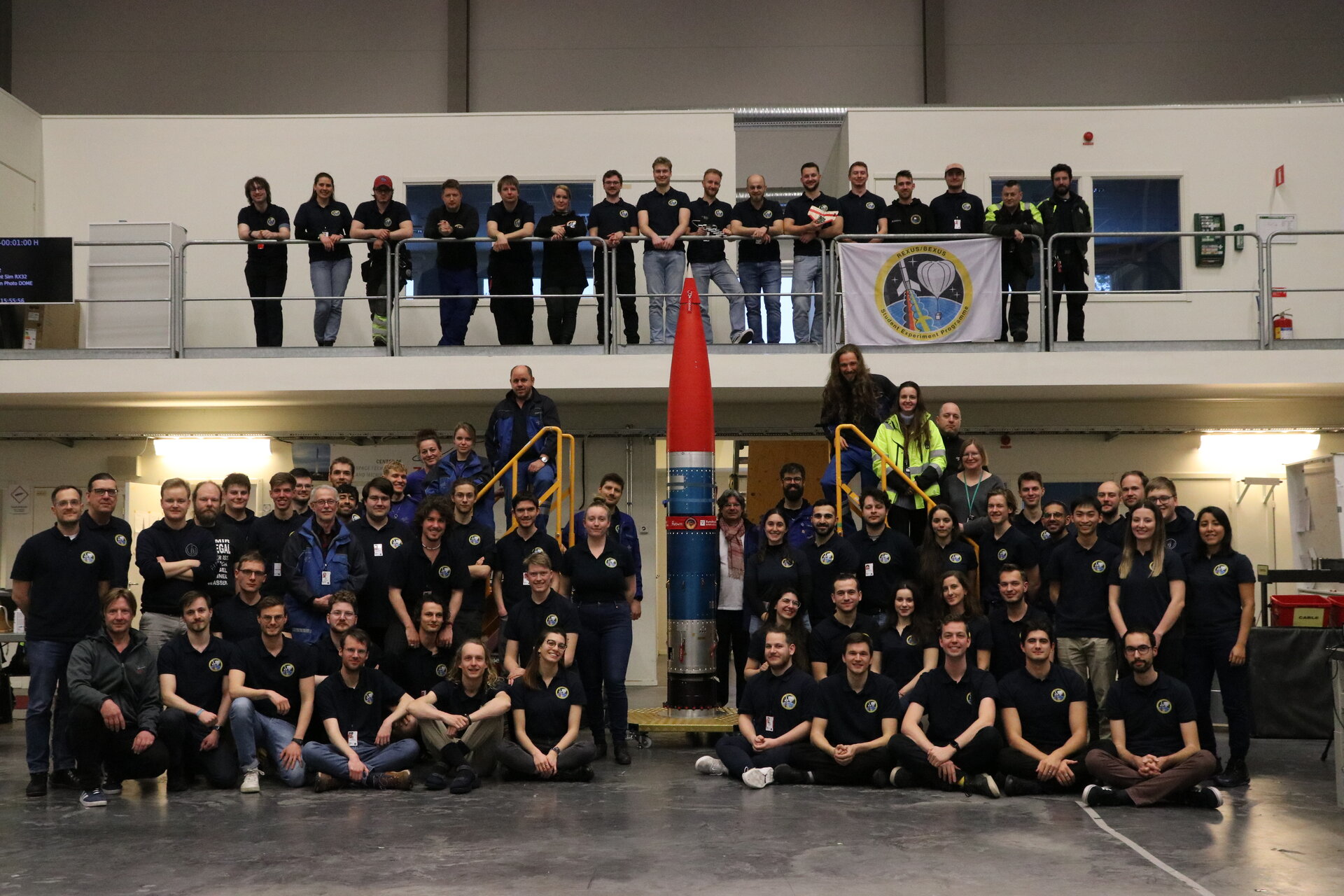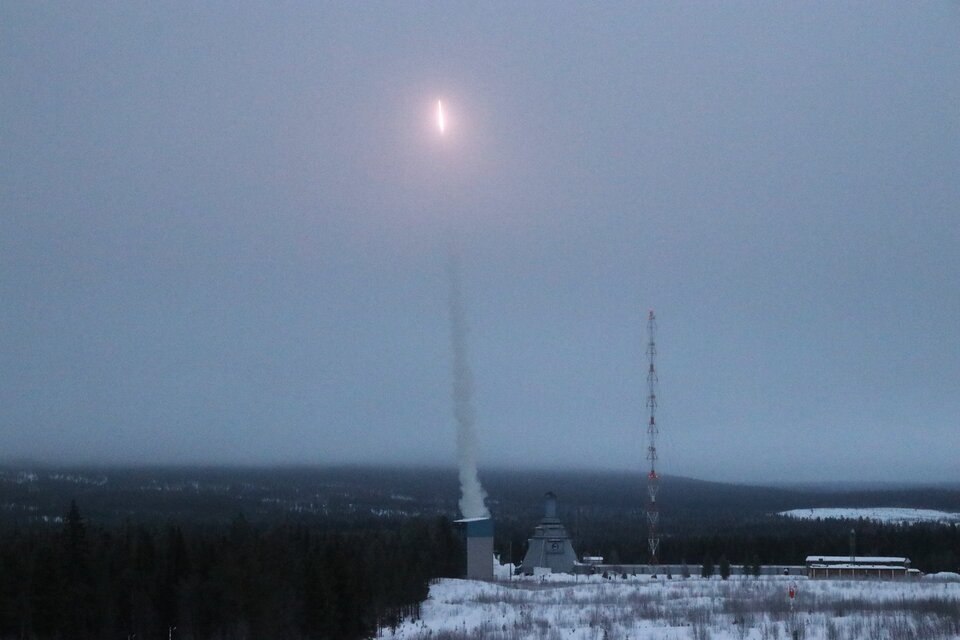Eight student experiments launched on sounding rockets
From 4-16 March 2024, 76 university students travelled to the Esrange Space Center in northern Sweden where they had their experiments launched on board of two sounding rockets REXUS 31 and REXUS 32. The students represented eight experiment teams participating in the Swedish-German REXUS/BEXUS programme. Four team were sponsored by the Swedish Space Agency (SNSA) in collaboration with ESA, the other four by the German Aerospace Center (DLR).
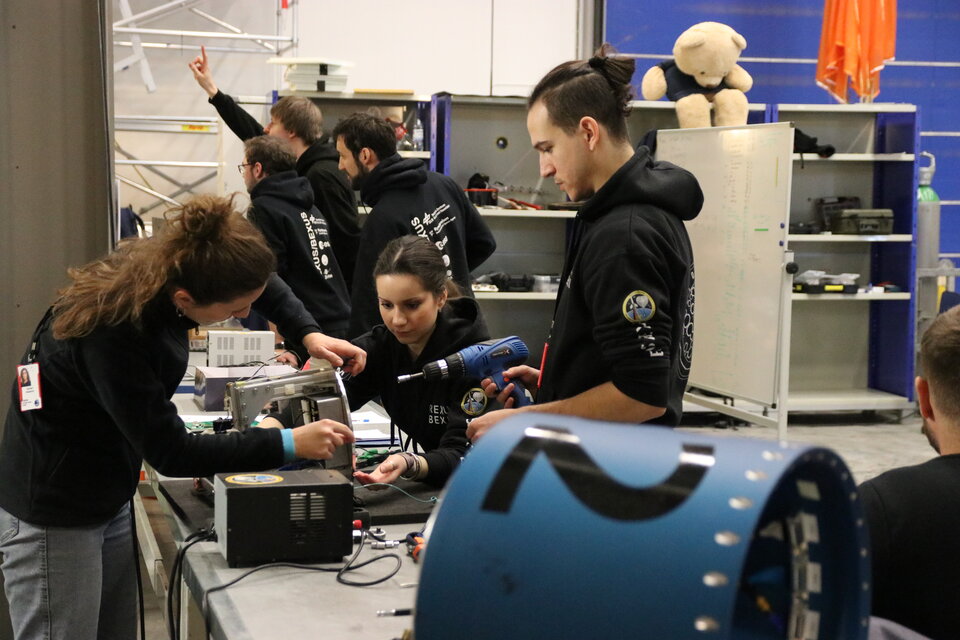
The teams were selected to participate in the REXUS/BEXUS programme in December 2021. Following their selection, the student teams worked intensely on their experiments, developing them from an initial idea into the actual flight hardware launched in Sweden. Along the way, they were closely followed and supported by experts from SNSA, DLR, ESA, the Swedish Space Corporation (SSC), the Center of Applied Space Technology and Microgravity (ZARM) and DLR’s Mobile Rocket Base (MORABA).
The days of the launch campaign were packed with final preparations and rigorous testing to make sure all experiments were in the best condition for launch. Not all tests went without problems. Some teams did encounter unexpected mechanical, electrical or software issues which needed to be solved in order to proceed with the campaign. But so close to their goal, the students did not give up. They remained calm, working determined to find solutions for their experiments’ hick ups.
In the end, all issues could be solved and on 12 March it was finally time to launch the first rocket. At 03:00 AM local time, the student teams of REXUS 32 gathered in the scientific centre – the control room where they had set up their ground stations that allowed a remote operation and monitoring of their experiments. From there they would follow the countdown and flight of their rocket. After a smooth countdown, REXUS 32 lifted off at 06:15 local time and reached an apogee of 75.9 km. It carried four experiments on board:
- BOOMERANG (nonBOOM-deploying Experiment with a Return-to-launch-site Autonomous Non-propelled Glider) form the KTH Royal Institute of Technology in Sweden ejected two capsules from the REXUS rocket. Both equipped with a paraglider to allow the capsules to autonomously fly to target landing coordinates.
- DROPSTAR (Study of Oil Droplet Coalescence in Emulsions in Microgravity) from the Aristotle University of Thessaloniki in Greece studied the oil droplet coalescence phenomena that take place in an emulsion under microgravity conditions.
- SHEAR (Supersonic Heatshield Experiment Aboard REXUS) from the Delft University of Technology in the Netherlands aimed to flight-prove an alginate and montmorillonite nanocomposite foam, a self-developed heat shield material.
- GAMEon (Glider for Atmospheric Measurements and Experiments) from the Ernst-Abbe University (EAH) Jena in Germany developed a glider that autonomously steered to a target coordinate after it was dropped from the rocket.
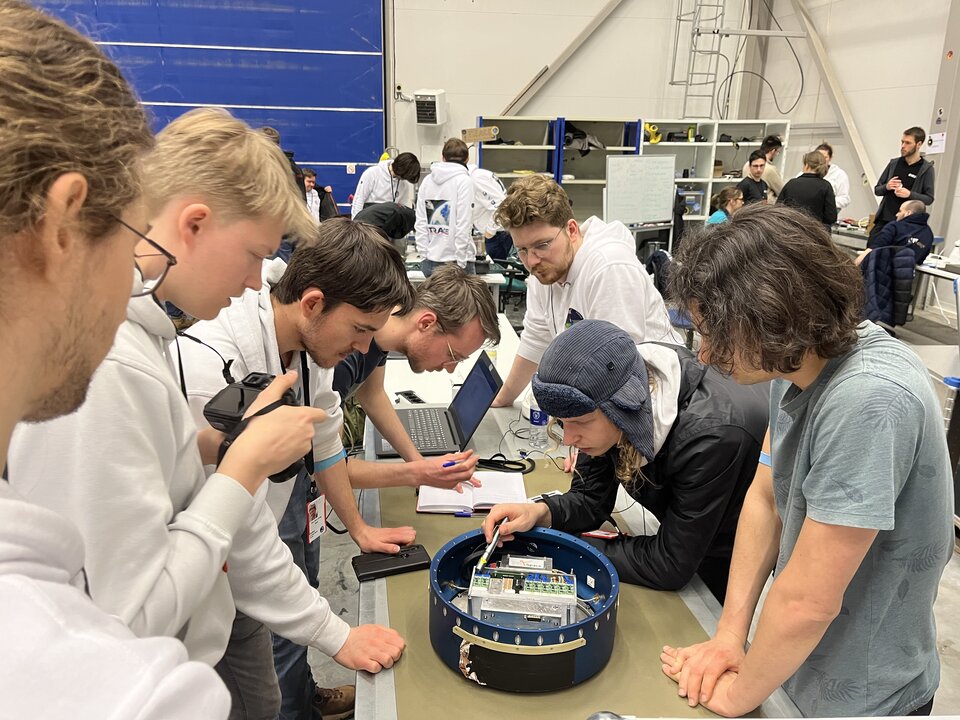
The launch of REXUS 31 should follow next. The rocket was installed on the launcher, student teams and the launch site stations were ready to go. But not the weather. After sunny and clear days in the first half of the campaign, snow came in in the second.
The weather forecast for 14 March showed a potentially clear window in the early afternoon. To not miss an opportunity, countdown operations started at 08:30 local time. The countdown went into a planned hold at T-1h, to wait for the weather to clear up. As predicted, the snow dissipated around noon and the countdown could be continued. REXUS 31 launched at 13:00 local time lifting four experiments to an altitude of 78.5 km:
- PR4 (Payload for Radiation measurement and Radio-interferometry in Rockets Revisited) from the Radboud University Nijmegen and Eindhoven University of Technology from the Netherlands flew two experiments in one. They used radio-interferometry for live tracking of the sounding rocket during flight. In addition, they measured the flux and arrival of cosmic rays using a detector built to CubeSat specifications.
- CREATE (Carbon REinforced Additive manufacturing Technology Experiment) from the Technical University of Braunschweig in Germany investigated the influence of gravity on fibre-matrix impregnation in additive manufacturing of fibre composites.
- FerrAS (Ferrofluid Application Study) from the University of Stuttgart in Germany tested two ferrofluid-based pumping mechanisms: a Displacement Pump for demonstrating an efficient pumping mechanism and a Linear Pump to be used in a fluid-based attitude control system.
- TRACE (TRAnspiration Cooling Experiment) from the RWTH Aachen University in Germany evaluated the performance of a transpiration cooling system for a re-entry vehicle which was ejected during the flight.
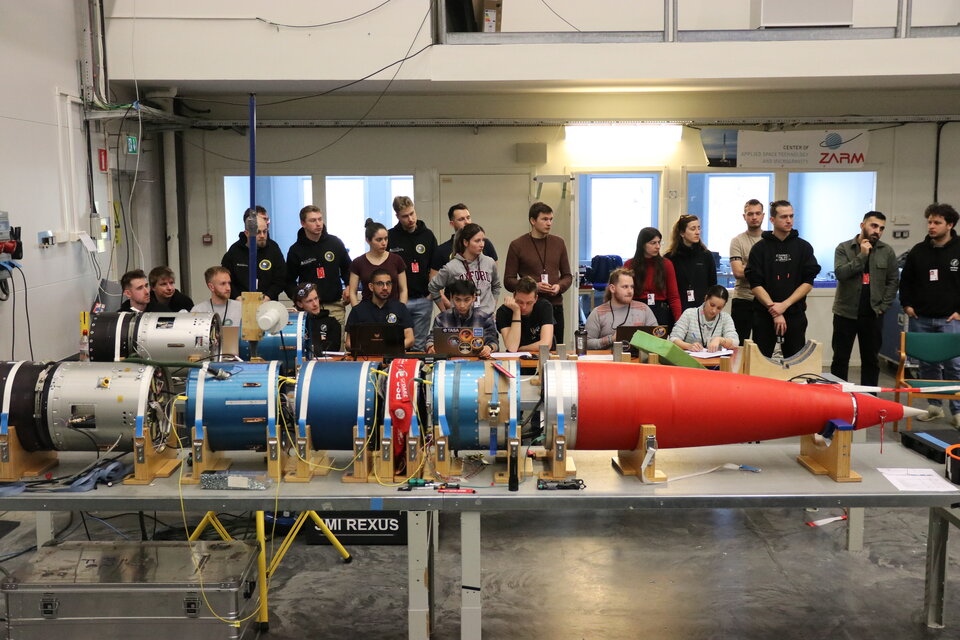
Both rocket payloads were equipped with a parachute and landed back on earth. Just a few hours after touchdown, helicopters brought them back to the student teams, who immediately went to work to inspect their experiments and secure flight data.
On the last day of the campaign, all teams could present preliminary results in a post-flight meeting. The students were all very happy with the performance of their experiments and their obtained results. A further and more detailed data analysis comes next.
Congratulations to all teams and the organisers of REXUS/BEXUS!
Each year, two rockets and two balloons are launched within the REXUS/BEXUS programme, carrying in total up to 20 student-built experiments. A new call for proposals will open in June 2024. More information on the application process can be found here.
About the REXUS/BEXUS programme
The REXUS/BEXUS programme is realised under a bilateral Agency Agreement between the German Aerospace Center (DLR) and the Swedish National Space Agency (SNSA). The Swedish share of the payload has been made available to students from other European countries through a collaboration with the European Space Agency (ESA). EuroLaunch, a cooperation between the Swedish Space Corporation (SSC) and the Mobile Rocket Base (MORABA) of DLR, is responsible for the campaign management and operations of the launch vehicles. Experts from DLR, SSC, ZARM and ESA provide technical support to the student teams throughout the project. REXUS and BEXUS are launched from SSC, Esrange Space Center in northern Sweden.


